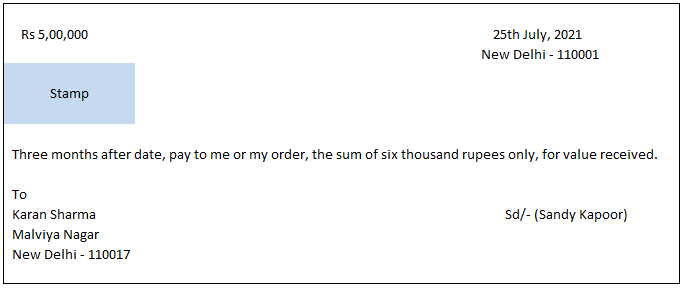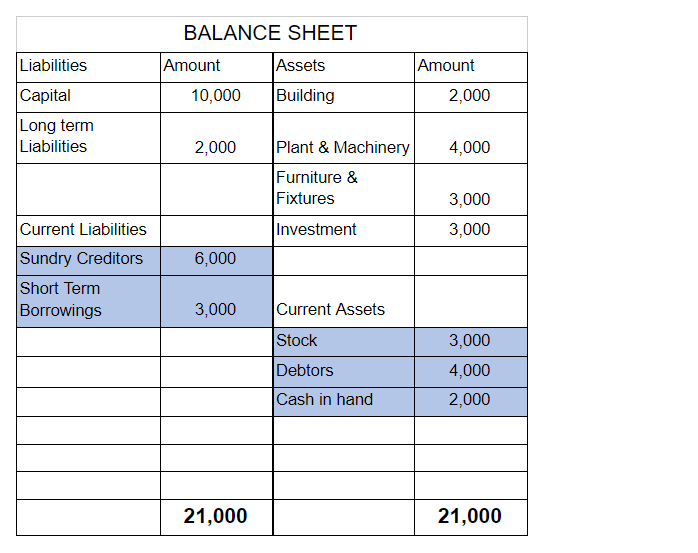1) Cash Book 2) Statement 3) Journal 4) None of these
Debit Balance A debit accounting entry represents an increase in asset or expense account or a decrease in liabilities of an individual or enterprise. Debit balance is the amount in excess of debit entries over credit entries in the general ledger. The debit balance is shown as Dr. Credit Balance ARead more
Debit Balance
A debit accounting entry represents an increase in asset or expense account or a decrease in liabilities of an individual or enterprise.
Debit balance is the amount in excess of debit entries over credit entries in the general ledger. The debit balance is shown as Dr.
Credit Balance
A credit accounting entry represents a decrease in assets or an increase in liabilities or income accounts of an individual or enterprise.
The credit balance is the amount in excess of credit entries over debit entries in the general ledger. The credit balance is shown as Cr.
Credit Balance in the Passbook
A passbook is a record of a customer’s account transactions kept by the bank. The passbook is a copy of the bank account of the customer in the books of banks. “Credit balance in the passbook is also called bank balance”.
The bank balance is the amount available for withdrawal. A bank balance is an asset to the individual or an enterprise which can be used for the purchase of another asset or payment of liability or expenses.
All the transactions either debit or credit are recorded in the passbook. When the total amount of all credit entries in a passbook is more than the total of debit entries, it results in a credit balance. It means that the bank owes to an individual or enterprise.
The amount withdrawn by a customer from the bank is shown as a debit entry and the amount deposited by the customer is shown as a credit entry. The passbook’s credit balance is a positive or favourable balance while the passbook’s debit balance is a negative balance or unfavourable balance.
For example: An individual deposited $50,000 in a bank account and withdrew a total sum of $30,000. So here, the passbook will show a bank balance of $20,000 i.e. the credit balance of the passbook. It signifies the positive cash flow of the individual and that the bank owes $20,000 to the individual.
Debit balance in Pass Book
When the total amount of all debit entries in a passbook is more than the total of credit entries, it results in a debit balance. Debit balance in the passbook is also called “Overdraft”. It means that an individual or enterprise owes to the bank.
Reconciliation
It is the process of identifying and rectifying differences between the passbook and cashbook maintained by the bank and customer respectively. The aim is to ensure the accuracy of the transaction recorded in the cashbook and passbook.
Debit Balance Reconciliation
The debit balance in the cashbook and the credit balance in the passbook shows that some outstanding cheques are in the process of clearing and these cheques need to be adjusted for reconciliation of the balance of the passbook and cashbook.
Credit Balance Reconciliation
The credit balance in the cashbook and debit balance in the passbook shows that deposits already recorded in the cashbook are yet to be recorded in the passbook by the bank and these deposits need to be adjusted in the passbook for reconciliation of the balance of the passbook and cashbook.
Conclusion
The debit and credit balance of the passbook is the indicator of the financial position of an enterprise or individual. A credit balance signifies more deposits than withdrawals resulting in a positive bank balance.
See less












1) A simple petty cash book is like a cash book. Definition The term 'petty' means small. A simple petty cash book is identical to a cash book, maintained to record the small expenses of a business like stationery, postage, stamps, carriage, etc. The cash received by a petty cashier is recordRead more
1) A simple petty cash book is like a cash book.
Definition
The term ‘petty’ means small. A simple petty cash book is identical to a cash book, maintained to record the small expenses of a business like stationery, postage, stamps, carriage, etc. The cash received by a petty cashier is recorded on the debit/ receipt side whereas, the cash he pays is recorded on the credit/ payment side. The difference between the sum of the debit and credit items represents the balance of the petty cash in hand.
Format
Explanation
Cash Book – A simple petty cash book is recorded and maintained just like the cash book. Just like a cash book records all the major transactions of the business, a petty cash book only focuses on the expenses which are of little value. Just like the cash book is maintained by the accountant of the business, the petty cash book is maintained by the petty cashier.
Therefore, a petty cash book is like a sub-part of a cash book itself.
Statement – A statement in accounting terms refer to a report. They are prepared to show some accounting data and different types of statements show different perspectives of the company’s financial health and performance. For e.g Balance sheet, trial balance, cash flow statements, etc.
Thus, a petty cash book is not a part of statements in accounting.
Journal – A petty cash book is not a part of a journal as a journal entry records business transactions in the accounting system for an organization and is also called the building block of the double-entry accounting method. While a petty cash book is maintained to record the small expenses of a business that are of little value.
Therefore, 1) Cash book is the correct option.
See less